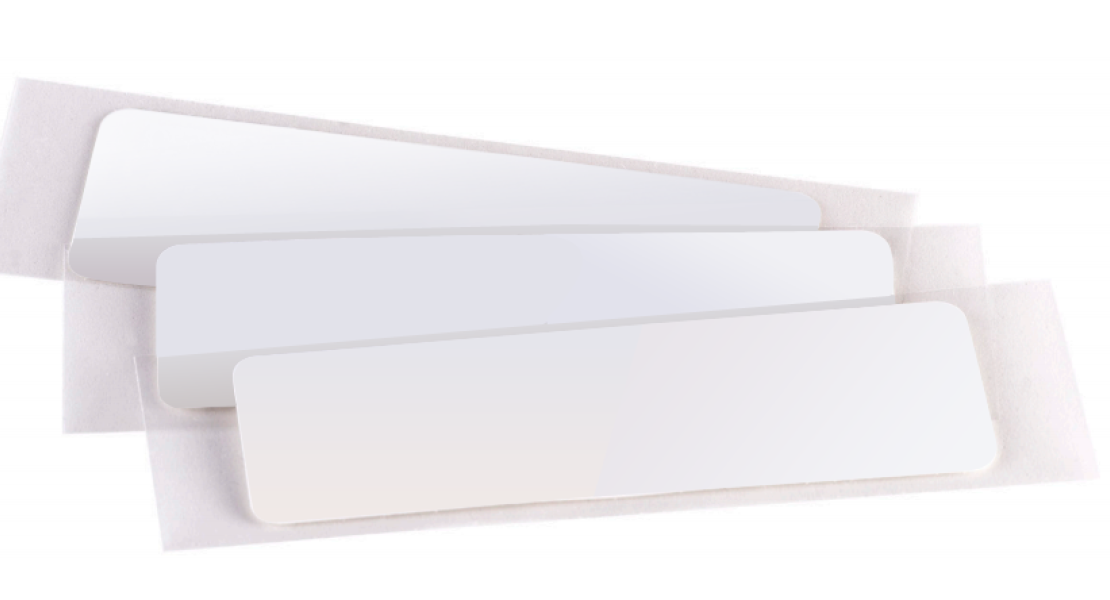For decades, RFID tag technology has been justifying itself by confirming the existence of assets. But only recently have passive RFID tags become a viable tool in confirming how those assets exist. By eliminating RFID sensors that require wired electrical systems or batteries, their associated maintenance costs, and, in some cases, physical handling of the asset, remote, wireless RF passive sensors provide accurate data with real time delivery and tracking in a cost effective manner.
Passive RFID Sensors
Made as a passive tag that receives energy from the chip itself and reads from distances measured in meters/feet, an RF tag can have two capabilities. One, it can act simply to identify assets specifically-giving an individual asset presence (being). Or two, it can act simply to identify an asset’s condition (state of being). These two capabilities together, both identifying and sensing, can put a tag into a place and for a purpose never dreamed of a decade ago.
More than identification, through chip programming, sensor tags can give readouts on moisture, temperature, pressure, chemical composition and more. Its programmed chip monitors (according to set parameters) characteristics of the asset and, through radio wave transmission, sends detected data to a reader for immediate analysis.
Because of these features, use of passive sensor tags will become ubiquitous in enterprise. Performance options, data immediacy, ease of use and economy of scale give use equal placement or prominence over similar technologies. In automotive, construction, agriculture and healthcare venues, these sensor tags have been placed into practice and more placement is to come.
RFID Sensors: Examples & Implementations
Take the use in the automotive industry for example. A chief pain-point to car manufacturers are chassis vulnerable to moisture leaks even before they leave the production floor. Car owners who have experienced driving through a mud puddle on Thursday, notice a musty car smell on Monday, and find a wet carpet under the floor mat on the following Wednesday can appreciate the value of having a water-tight chassis. Because car manufacturers want the chassis to be tight when it leaves the plant, they put it through a water bath. When a frequency tunable sensor tag is placed on the floorboards of a freshly minted chassis, plant personnel can detect interior moisture if it exists. Leaks, therefore, can be closed before cars leave the plant-a benefit to manufacturers distributors and customers alike.
Another example use of RFID sensors comes from tire manufacturers and the race track. The website Automotive IT News reports Chris Baker, who directs motorsports for Michelin, as saying that IDing tires was the simplest use of RFID tags and sensors, but the technology actually supports a much higher level of data acquisition. “What we’ve looked at in the pilot stage [of RFID implementation] is getting information on the tire’s internal temperature and pressure, how it’s wearing and getting exercised, revolutions per mile and more.” If he is not talking of RF sensors directly, he should be doing it soon.
The construction industry faces its own banes. According to Scott “Spiderman” Mulholland President and CEO of U S Building Consultants, “many buildings start leaking immediately after construction or show signs of problems within the first five years. Water intrusion is one of the main contributing factors to building damage, litigation, structural damage, rot, termites and microbial problems that can lead to sick building syndrome. For many, water leaks can be like a plague that just simply will not go away.” Because passive sensor tags detect moisture and temperature issues when placed in areas such as crawl spaces and attics, these problems can be cured before major damage is incurred. Prior to structure construction, when placed on lumber, passive sensor tags can also detect green (moist) lumber which warps with the potential to cause structural damage. Similar concerns are posed when dealing with cement and other materials that require curing.
In agricultural circles, fish farming has become a hot topic since its omega 3 is touted for nutritional value. Of course, fresh fish is desirable and passive sensor tags are aimed to provide it. According to an article in the Journal of Agricultural and Food Chemistry, fish odor-produced by the chemicals in the air-is used by sensor tags to determine freshness and, eventually, enables sensor packaging to be used which reflects the quality of the fish inside.
Finally, in hospitals and senior care centers, passive moisture sensors are attached to briefs used by patients and residents with bladder incontinence, a consistent medical condition. Since wet conditions can cause the breakdown of skin tissue, infection and possible death-not to mention odor and embarrassment-passive sensor tags are a blessing.
Chip manufacturers and tag converters come together to explore how the benefits of passive sensor tagging can work with individual enterprises to meet production, distributions, and consumer needs.
Passive RFID sensors present an additional tool for enterprises of all types to use in all kinds of ways for WIP efficiency.
To discover more about passive RFID and how it could assist your business, contact us today at [email protected].
 | About the Author: Aaron HobertAaron Hobert is our RFID Technical Specialist. Hobert joined Metalcraft in September of 1994 as a Litho Press Operator, became the Autograph Team Lead in 1998 and in April 2005 he became the RFID Sales Support Rep. He was named our RFID Technical Specialist in 2008. Aaron lives outside Charles City with his wife Diane. Mobile Phone: 641-330-2660 Email: [email protected] Office: 3360 9th St. SW, Mason City, IA 50401 Office Phone: 641-423-9460 |




